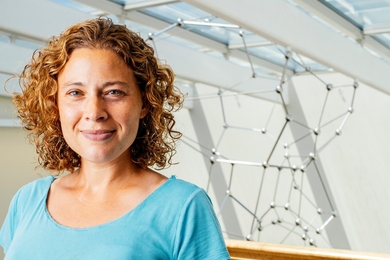"We can no longer think of CEOs and chairmen as captains of their businesses," Associate Provost of the Arts Ellen T. Harris announced at the recent Industry Summit. "They need to be designers."
"The twenty-first century will be a different world," echoed Glen Urban, newly appointed dean of the Sloan School of Management. "The old rules may not work; instead of just changing the tire, we'll have to figure out how to change the tire while the car is moving!"
Sculpture gardens at PepsiCo, dance training at G.E. Plastics, artists working in foundries of the Kohler Company, and artists-in-residence in MIT's science and engineering departments were among the examples put forth as Professors Harris and Urban teamed up for the first time to discuss "Business and Creative Arts: A Partnership for Problem Solving."
Citing models of art and artists in the workplace, training employees as artists and hiring practices which favor candidates with arts backgrounds, Professors Harris and Urban made the case for the arts as potential sources of creativity, risk-taking, intellectual challenge, discipline, team-building and understanding of different cultures. "When you look at what's going to make the difference in the 21st century, one of the key factors is going to be creativity," said Professor Urban, who is himself a sculptor and art collector. "We'll have to think about problems in a very different way than we've had to before... the arts help us see things differently, less rigidly."
Professors Harris and Urban criticized perceptions of the arts as "recreational" or "leisure" activities. "People used to think that if you were really a serious student, you wouldn't waste time taking an art course," said Professor Urban. But both recognize a different attitude at MIT. "It's been very important for me at MIT to make sure that the arts are seen as integral to what we do, and not something we do for recreation," said Harris. "As Victor Weiskopf [MIT Professor Emeritus of Physics] has recognized, creativity in the sciences and creativity in the arts are not mutually exclusive-if you learn only at one end or the other of the spectrum you end up somehow blinkered, as if you are wearing blinders."
In the end, said Professor Harris, "working with the arts and with artists can help produce not just just better-rounded scientists and engineers, but better scientists and engineers." And by helping us recognize new paradigms, enhance creativity and building teams, said Professor Urban, the arts can play a major role in helping produce better managers.
A version of this article appeared in the September 22, 1993 issue of MIT Tech Talk (Volume 38, Number 7).





